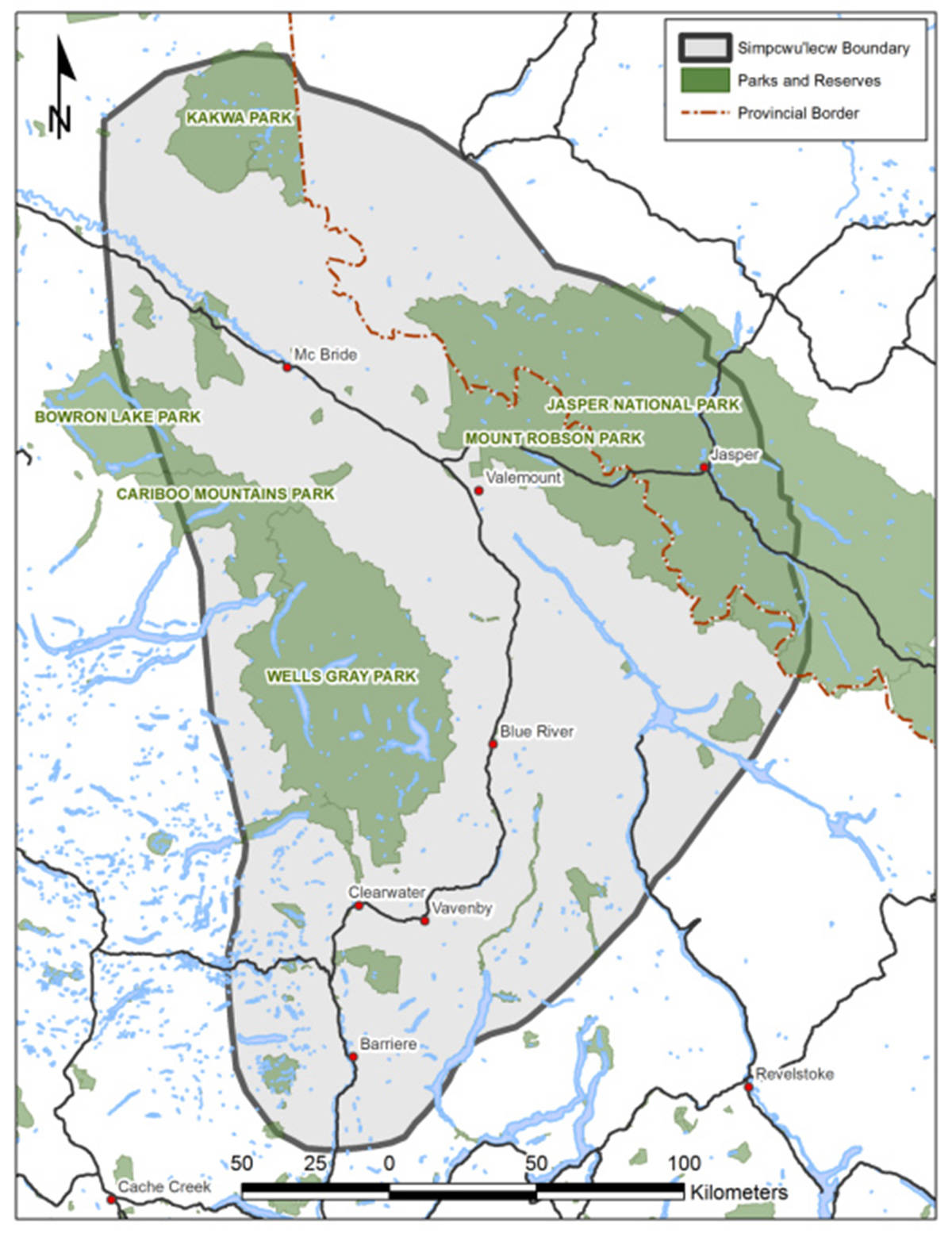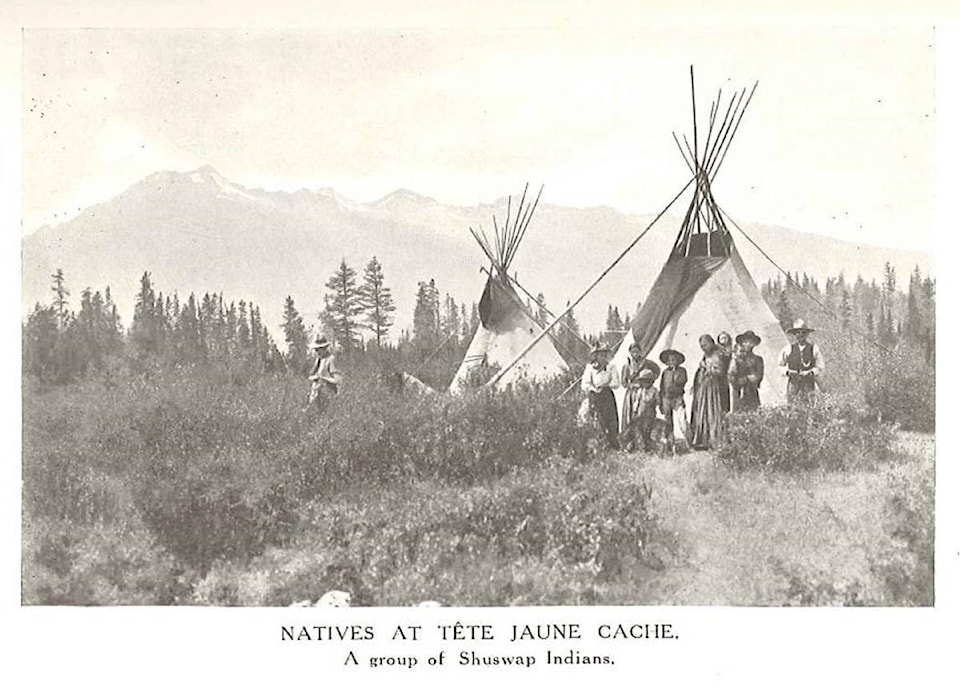By Ida Dekelver
The Indian history of Clearwater reaches back far beyond the comprehension of most of those concerned with pre-history.
Though their culture has evolved for tens of thousands of years in B.C., little is know of their history aside from myth, legend and scanty archeological information.
READ MORE: Simpcw First Nation retraces its steps to Tete Jaune (July 12, 2016)
The Indian people of the Clearwater area, known as Ns’mpxemux (people of the North Thompson River) are Shuswap, a sub-division of the Interior Salish group. With influence from other groups through inter-marriage and trade, suggested by archeological evidence, the people who are known today as Shuswap developed a way of life uniquely adapted to the region they occupied.
The coming of the fur traders and Europeans spread a culture based on ownership of land and exploitation of natural resources, a painful conflict with the Indian way of life, which had evolved through the adaptation to their particular region.
The great smallpox epidemic of 1862 spread through the province, killing about one-third of the native people (quotations from article by Nancy Condrashoff, chief technician in archeology, Provincial Museum).
The North Thompson was an excellent source of furs and as early as 1827 (Fort Kamloops report for the Hudson’s Bay Company by Archibald Mackenzie) quote: “At least 60 miles of the North River runs with gentle current; beyond that distance to the Rocky Mountains it is not about three or four portages with Indian canoes but the descent and shoaliness of the water it will take natives from 12 to 15 days getting to a portage of three days to make across to Canoe River.”
That period represented by the North-West Company shipped furs by way of Boat Encampment on Kinbasket Lake down the Columbia. Thus the Canoe River was the link with the North River. A trail across the mountains from Blue River to Boat Encampment is told of being an overland link.
It seems there is only one tradition of an historical migration known to the tribe – that of Kenpesket, a well known North Thompson chief who, with 50 or 60 friends, mostly members of the same division, migrated to the head of the Columbia River, in the confines of the Kootenai tribe.
They made trips mostly with canoes by way of Canoe River and made alliances with Stony Indians of the Rocky Mountains, who were in the habit of going to Columbia River in the fall to fish for salmon.
This migration took place about 1844; every two or three years Kenpesket or some of his people would visit their old home and upon their return to their own village others would frequently accompany them.” Quotation from J. Teit, “The Shuswap People,” page 467.
Trouble with tourists
The largest known encampment on the North Thompson River was in what is now North Thompson Provincial Park and was most mentioned in early journals. It is situated about one-half mile below the confluence of the North Thompson and Clearwater rivers, on the north bank.
The site consists of 37 recorded house-pits.
The North Thompson bands were the most nomadic group and, because of their wanderings in search of food, they retained their traditional culture longer than most Interior tribes due to their isolation.
Two sites have been excavated and have yielded several artifacts, including stone and bone tools; the most interesting are a copper trade bead and a piece of red ochre.
The Overlanders of 1862 mentioned stopping at this encampment to barter for food.
“While the men went to the camp to barter for food, leaving Mrs. Schubert and her children at the raft, an old Klootchman (Chinook jargon word for Indian woman) went down to investigate. She had never seen a white woman before and her curiosity was aroused.
But she saw something that interested her even more than the novel sight of the white woman. When she saw the bond that held the raft to the river-bank was a rope made of black cowhide, and as she had lost an animal of that color, she immediately came to the conclusion she had discovered her property.
In a frenzy of rage she seized hold of the hide rope and was about to cast it loose, an act that would have sent the raft with its occupants adrift at the mercy of the erratic current, when the cries of the frightened children and the loud excited voice of the angry Klootchman and protesting Mr. Schubert brought the men down to the shore on the run.
After much parleying they succeeded in pacifying the Indian woman and finally convinced her of their innocence of the offense of which for a time she had believed them guilty. With the scant supply of provisions they had succeeded in obtaining by trading, they resumed their voyage.” (Overlanders of ‘62, Mark S. Wade, M.D., page 115).
– The above article first appeared in the April 16, 1975 issue of the Clearwater Times. Ida Dekelver was a local historian who was perhaps best known for walking from Clearwater to her hometown of Wadena, SK in 1967. She passed away on March 17, 2017.

